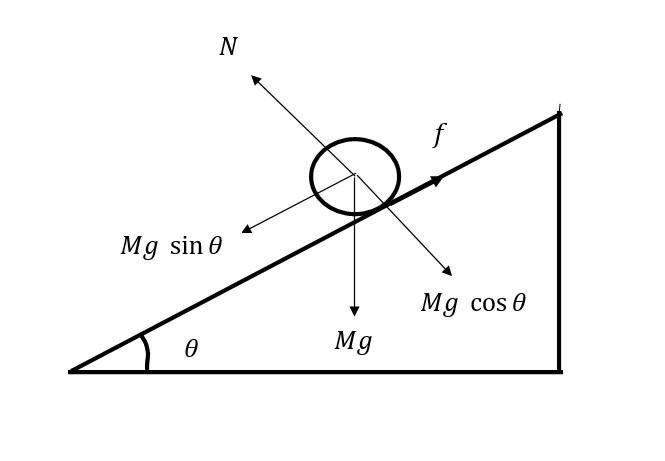(a) Find its acceleration. (b) Find the angle at which static frietion is at its maximum, at just above this angle the object will start to slip.
Can you please help me solve the attached problem?

The Moment of Inertia of a system of particles is the sum of the product of the mass and the square of the distance between the particles and the axis of the rotation. If are the masses of particles and be the distance between them and the axis of rotation. Then the moment of inertia of the system of particles is given by
Let a cylinder of mass M and radius R be rolling down an inclined plane. The external forces acting on the cylinder are the weight of the cylinder in the downward direction, the normal reaction force acting perpendicular to the surface of the inclined plane, and the frictional force acting in the upward and parallel to the inclined plane. The free body diagram of the system is

Net force in the downward direction
If is the linear acceleration of the cylinder then by Newton's second law of motion
Torque due to the frictional force
Again we know that where is the angular acceleration. Then we have
Therefore the force equation is
Now for a cylinder rolling about an axis passing through the center and perpendicular to its cross-section is
a. Therefore the acceleration of the cylinder is
For the given problem
b. The frictional force is given by
The static friction force . Now the normal reaction force is
The condition for rolling without slipping is
This gives
The maximum angle at which the body starts slipping can be found using
Step by step
Solved in 3 steps with 1 images
